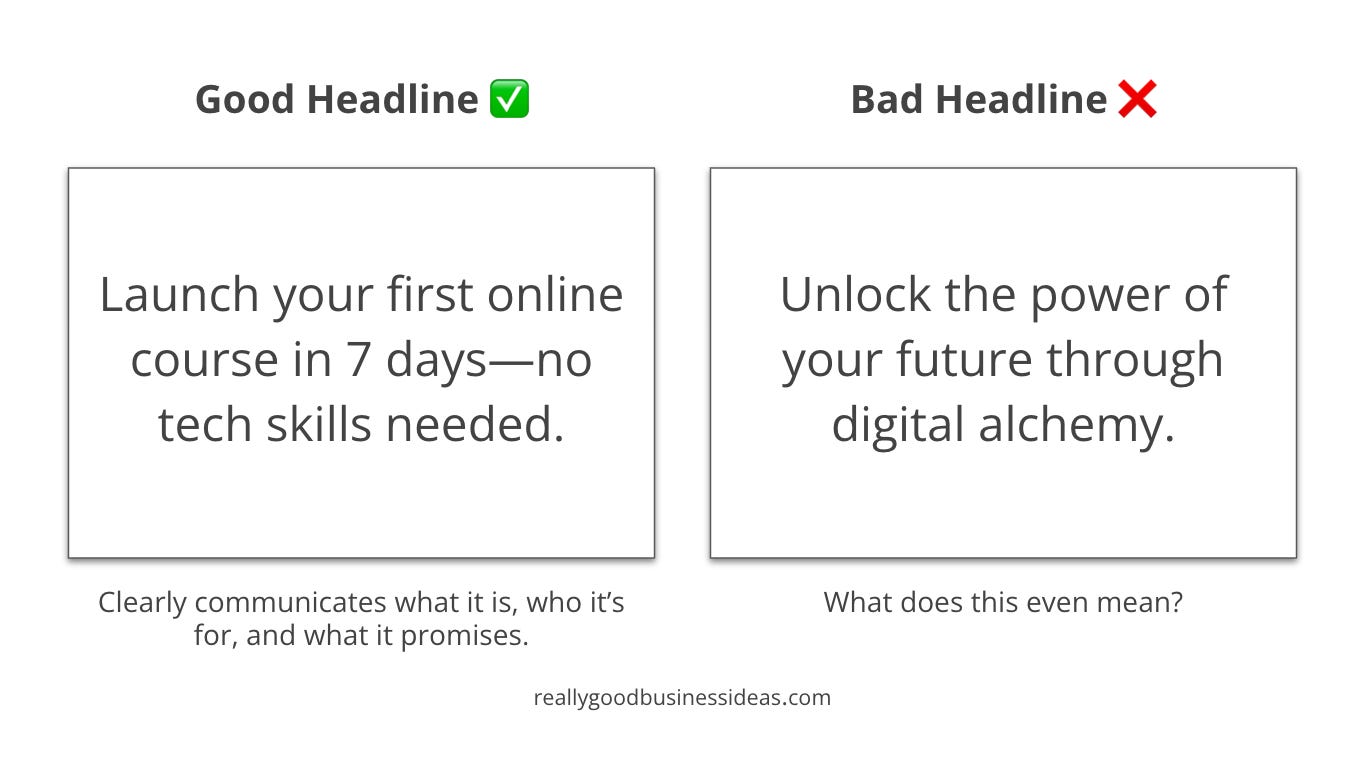The Psychology Behind Landing Pages That Convert Like Crazy
Why psychology outperforms design trends.
Let’s get one thing straight: you don’t need to be a design genius to build a high-converting landing page. You only need to understand how people think.
A landing page is a standalone web page created for a single, focused purpose: to convert visitors into leads or customers.
It’s where someone “lands” after clicking a link in an ad, email, social post, or search result. Unlike a homepage with many links and navigation options, a landing page strips away distractions and zeroes in on one clear call to action (CTA).
Great landing pages aren’t effective by accident. They’re rooted in psychological principles that trigger trust, desire, and action.
Today, I’ll break down six mental shortcuts and cognitive biases that drive conversions so that you can design smarter, not harder.
1. First Impressions: The Halo Effect in Action
A clean layout, clear headline, and strong visual hierarchy help you leverage the halo effect1 to signal trust and quality instantly. The halo effect is a psychological bias where our overall impression of someone or something influences how we feel and think about their specific traits.
Simply put, if something looks good, we assume it is good.
This means that when visitors land on a page that feels polished, modern, and professional, they’re more likely to:
Trust the product or service.
Believe the offer is legit.
Be open to taking the next step (converting).
Even if they haven’t read a single word yet!
This impression forms in about 50 milliseconds—faster than a blink of the eye.2 So, visual design isn’t just decoration, it’s a trust-building tool. That split-second impression can make or break your conversion rate.
For example, when we see a clean, minimalist page design, we think, “This must be a premium product.”
But when we see a messy, outdated design, we think, “This might be sketchy or amateur.” Even if it’s the exact same product.
Pro Tip: Use one powerful image and a single, benefit-driven headline above the fold. Keep it distraction-free!
2. Clarity Beats Cleverness: Cognitive Fluency
We know you have less than a second to capture a potential customer’s attention, so don’t make them work for it.
Cognitive fluency is the brain’s preference for things that are easy to think about, read, or understand. When something feels simple, our brains interpret that simplicity as a signal that it must be true, safe, or worth engaging with.
When your copy is too clever or complex, it creates friction and causes visitors to bounce. Clarity wins every time.
This concept is backed by research that shows that people rate statements as more truthful and easier to understand when they are written in clear, high-contrast fonts.34
In other words, clarity makes your landing page feel more trustworthy, even if nothing else changes.
So why do so many marketers still try to be clever? Because clever feels creative.
But clever can also be confusing. If your headline makes people stop and think, you’ve already lost them. Confusion leads to friction. Friction leads to drop-offs. And drop-offs kill conversions.
When your copy is clear, people can immediately understand:
What it is.
Who it’s for.
Why they should care.
What to do next.
That’s what keeps them scrolling, or—better yet—clicking.
Here’s a quick way to check the clarity of your landing page: Ask a friend or colleague with no context to read your page and explain it back to you in five seconds or less.
If they struggle or get it wrong? It’s time to rewrite.
Pro Tip: Use short sentences and stick to everyday language. Focus on benefits, not buzzwords.
3. Social Proof: The Bandwagon Effect
Humans are social creatures. We look to others to guide our decisions, especially when we’re uncertain.
This is where social proof comes in. It’s a psychological principle rooted in the bandwagon effect, which says we’re more likely to adopt a belief or behavior when we see others doing it too.5
That means when a visitor sees that other people have trusted you, bought your product, or signed up for your newsletter, they’re more likely to do the same.
Even subtle cues can trigger this:
Testimonials with photos and names.
Brand logos (“Trusted by X, Y, and Z”).
Subscriber or user counts (“Join 10,000+ happy customers”).
Media mentions or awards.
Real-time notifications (“Sarah from Austin just signed up!”).
These signals act like tiny nudges. They reduce uncertainty, increase trust, and create a sense of belonging. Visitors will think, “If others are finding value here, maybe I will too.”
But here’s the key: social proof has to feel authentic.
Fake testimonials, overly generic logos, or obviously inflated numbers can backfire. Today’s consumers are sharp, and they’ll sniff out BS in seconds.
Pro Tip: Place social proof right next to your CTA. It will give potential customers that extra confidence boost at exactly the right moment.





